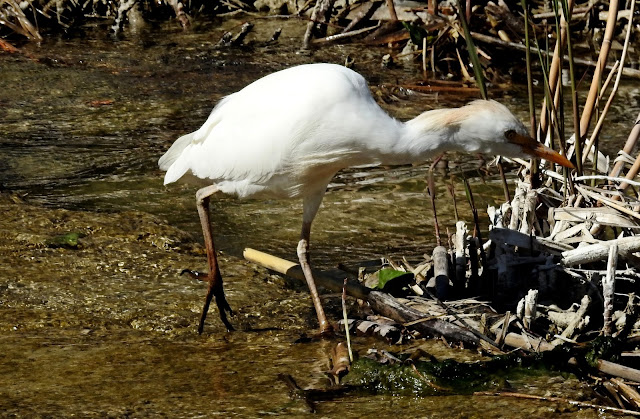This Blog contains Wildlife, Plants and Bird Photos from Walks, Safaris, Birding Trips and Vacations. Most of the pictures have been taken with my Nikon P900 and P950X cameras. Just click on any image for a larger picture. On the right column under the Blog Archive are the entries by date. Below that under Animal categories all the diffent species of Animals, Birds, Insects and Plants contained in the website are listed. Clicking on any entry will show all the entries for that species.
TOTAL PAGEVIEWS
TRANSLATE
Monday, 20 March 2017
19-3-2017 MIAMI, FLORIDA - BLUE JAY (Cyanocitta cristata)
Sunday, 19 March 2017
19-3-2017 MIAMI, FLORIDA - GREAT HORNED OWL (Bubo virginianus)
19-3-2017 MIAMI, FLORIDA - EASTERN BLUEBIRD (Sialia sialis)
19-3-2017 BUTTERFLY WORLD, FLORIDA - MEXICAN LONGWING BUTTERFLY (Heliconius hortense)
Saturday, 18 March 2017
19-3-2017 BUTTERFLY WORLD, FLORIDA - WESTERN TIGER SWALLOWTAIL (Papilio rutulus)
Like the other tiger swallowtails, the western tiger swallowtail was formerly classified in genus Pterourus, but modern classifications all agree in placing them within Papilio.
This common species is present in western North America. The normal range of the western tiger swallowtail covers much of western North America, from British Columbia to North Dakota in the north to Baja California and New Mexico in the south. Individuals occasionally turn up east of this range; in eastern North America, though, it is replaced by the similar eastern tiger swallowtail, Papilio glaucus.
These butterflies are frequently seen in urban parks and gardens, as well as in rural woodlands and riparian areas.
19-3-2017 MIAMI, FLORIDA - PILEATED WOODPECKER (Dryocopus pileatus)
The Pileated woodpecker (Dryocopus pileatus) is a large woodpecker that live in forests of eastern North America. It is the largest extant woodpecker species in North America, with the possible exception of the Ivory-billed woodpecker, which the U.S. Fish and Wildlife Service has proposed be reclassified as extinct. It is also the third largest species of woodpecker in the world, after the Great slaty woodpecker and the Black woodpecker. "Pileated" refers to the bird's prominent red crest, from the Latin pileatus meaning "capped".
19-3-2017 MIAMI, FLORIDA - CAROLINA WREN (Thryothorus ludovicianus)
Friday, 17 March 2017
17-3-2017 PARC DE NEGOCIS, BARCELONA - EUROPEAN GREENFINCH (Chloris chloris)
17-3-2017 PARC DE NEGOCIS, BARCELONA - EUROPEAN SERIN (MALE) (Serinus serinus)
17-3-2017 PARC DE NEGOCIS, BARCELONA - WHITE WAGTAIL (Motacilla alba)
17-3-2017 PARC DE NEGOCIS, BARCELONA - LITTLE EGRET (Egretta garzetta)
16-3-2017 MONTE CORNA, VALENCIA - RED ADMIRAL BUTTERFLY (Vanessa atalanta)
Wednesday, 15 March 2017
15-3-2017 MONTE CORONA, VALENCIA - EURASIAN HUMMINGBIRD HAWKMOTH (Macroglossum stellatarum)
15-3-2017 GANDIA RIO SERPIS, VALENCIA - EUROPEAN GOLDFINCH (MALE) (Carduelis carduelis)
23-3-2017 RANCHO NATURALISTA COSTA RICA - LESSON'S MOTMOT (Momotus lessonii)
15-3-2017 GANDIA RIO SERPIS, VALENCIA - SARDINIAN WARBLER (MALE) (Sylvia melanocephala)
Sunday, 12 March 2017
31-3-2017 MIAMI, FLORIDA - BARRED OWL (Strix varia)
The Barred owl (Strix varia) is a North American large species of owl. These are large nocturnal birds probably best known for their unique vocalizations that carry well over 0.8 km (0.50 mi). They have typical nesting habits for a true owl and raise a relatively small brood often in a tree hollow or snag in forested areas.
Saturday, 11 March 2017
11-3-2017 COLUMBIA - SCRUB TANAGER (Stilpnia vitriolina)
This Andean species is fairly common in open, dry habitats in Colombia and Ecuador. Look for a mostly blue-grey bird with brighter turquoise wings, a black mask and an orange cap. Sexes alike. Most similar to Burnished-buff Tanager but no range overlap. Usually seen in pairs or small flocks moving through woodland shrubs, secondary forest and gardens.
11-3-2017 MONTE CORONA, VALENCIA - RED LEGGED PARTRIDGE (Alectoris rufa)
11-3-2017 GANDIA, VALENCIA - SPECKLED WOOD BUTTERFLY (Pararge aegeria)
11-3-2017 GANDIA, VALENCIA - EUROPEAN SERIN (MALE) (Serinus serinus)
The European serin weaves its nest within the shelter of a shrub or tree, where it lays a clutch of 3 to 5 eggs. The chosen breeding habitats are often areas of open woodland and cultivation, with a preference for some conifers.The diet of the European serin is predominantly seeds, but it does not shy away from including insects during the breeding season, providing essential protein for its young.The IUCN Red List categorizes the European serin as Least Concern, indicating that, for now, this species does not face any imminent threats to its survival.




%2010.jpg)
%2020.jpg)


%201.jpg)

%2020.jpg)
%2021.jpg)
%2018.jpg)
%2020.jpg)
%2021.jpg)


%2020.jpg)

%2020.jpg)
%2021.jpg)


%20(Carduelis%20carduelis)%2020.jpg)
%2010.jpg)
%20(Sylvia%20melanocephala)%2020.jpg)


%2029.jpg)
%2030.jpg)


%20(Serinus%20serinus)%2020.jpg)
%20(Serinus%20serinus)%2021.jpg)
%20(Serinus%20serinus)%2022.jpg)


%20(Passer%20montanus)%2020.jpg)


%2020.jpg)
%2021.jpg)